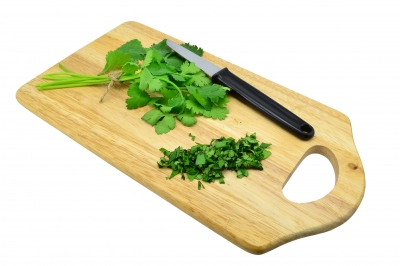Have you planted your herbs from seedlings or seed and then, to your delight, watched them grow? You may be wondering about the different ways to use your herbs, so let’s get down to the details.
Using your herbs naturally follows harvesting them. Because both wind and heat can destroy the essential oils in your herbs, timing of harvesting is very important. Common advice is to cut herbs mid morning, after allowing the early morning dew to dry, but before the strong afternoon sun lights on your herbs.
Of course, it should be noted that harvesting an herb does not mean removing the entire plant, but simply taking the necessary amount of growth for your current need. It is best, however, not to take more than a third of the plant’s leaves at once. And, each time that you clip or pluck some of your plant’s bounty is a good time to check for pests and clip off dead foliage. Remember that if you have picked more of one of your herbs than you can currently use, you can certainly preserve the extra to use later.
There are three primary ways that you can preserve your herbs for later use. These include drying, freezing or preserving them in salt or vinegar.
To best retain the oils inherent in your herbs, air drying them is preferred. Herbs with a lower moisture content, such as Marjoram, Rosemary, Oregano, Bay, Summer Savory, Thyme and Dill will respond well to air drying. A dehydrator works better for moister herbs like Basil, Chives, Tarragon and mint. Another option is to freeze the herbs in this latter category.
In order to air dry herbs, it’s best to bundle several stems together. You should remove any foliage near the base of the stems in order to make it easier to tie the bundle with string. Then hang these bundles in a cool, dark location. When drying individual leaves, you can place them on a screen or a rack for 1-2 days until dry, turning them frequently, so that they dry evenly. I personally don’t recommend drying them in the microwave.
Considering freezing or preserving your herbs in order to use them at a later date? Let’s discuss several options.
1. Simply cut your herbs into small pieces (about 1/4″ each) and place them in a container or cookie sheet that has been first lined with waxed paper. Then place them in the freezer. When frozen, place them in an air-tight bag and place them back in the freezer until you are ready to use them.
2. Do you love flavored salts? If so, again, on waxed paper that has been placed in a bowl or on a baking sheet, layer your garden herbs with salt (I prefer sea salt.) Once they are dry, you can store this mixture together or separate out your herbs and store the herbs and the ‘flavored’ salt in separate air-tight containers.
3. Preserve your herbs in cooking oil or vinegar for use over a 2 – 4 month period. For example, adding tarragon, basil or mint to vinegar is popular and the oil or vinegar can then be used for your favorite salad dressings.
When using your fresh picked herbs, cleaning them is as simple as placing them in the sink or in a suitable bowl filled with cool water. Swish them around gently until any dirt or debris is removed. If you suspect you have insects on the herbs, salt added to the water will normally get rid of them. When they are free of dirt and any insects, you can place them in your salad spinner to dry them.
The Author:
Lanny Danenberg is a cooking and herb enthusiast who lives in Northern California in the Bay Area. Her latest book, The Complete Herb Garden How-To Guide reveals a multitude of secrets for the home herb gardener.
Photo. Grant Cochrane
